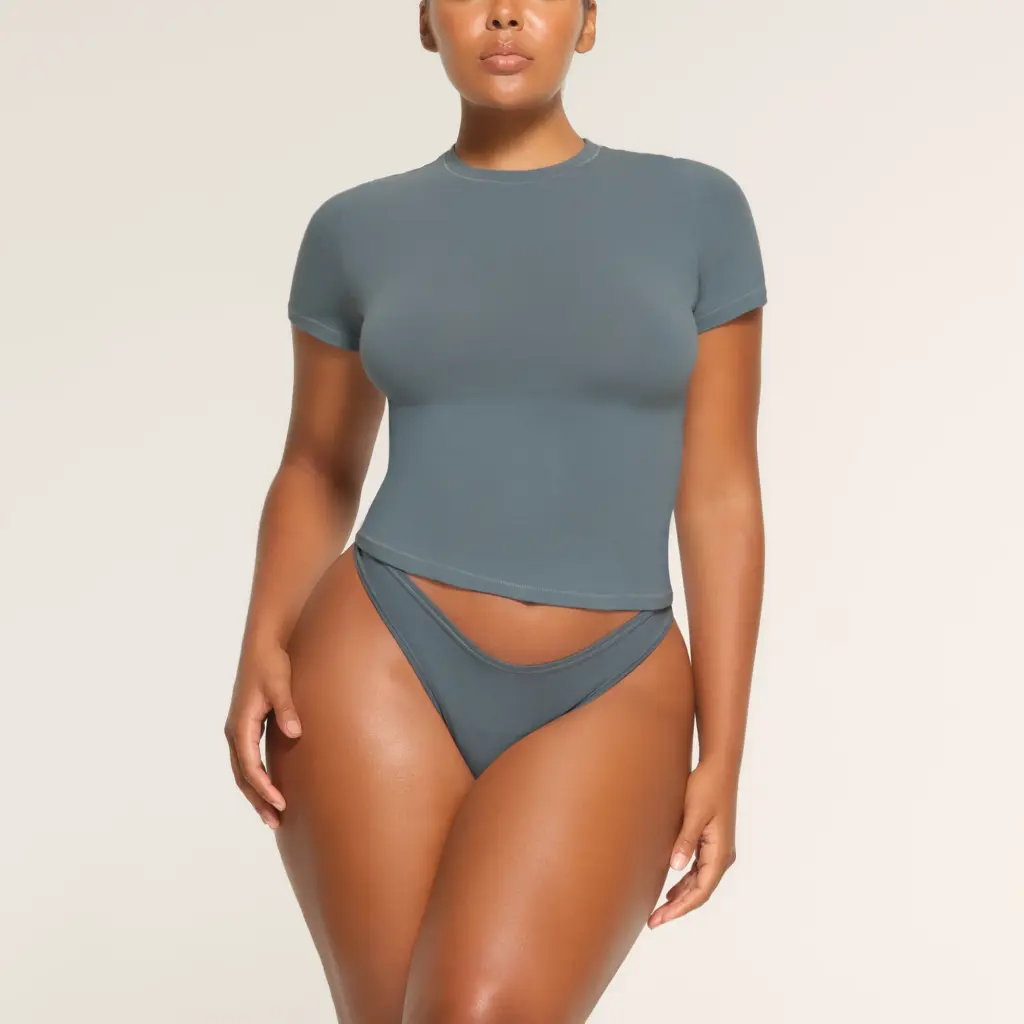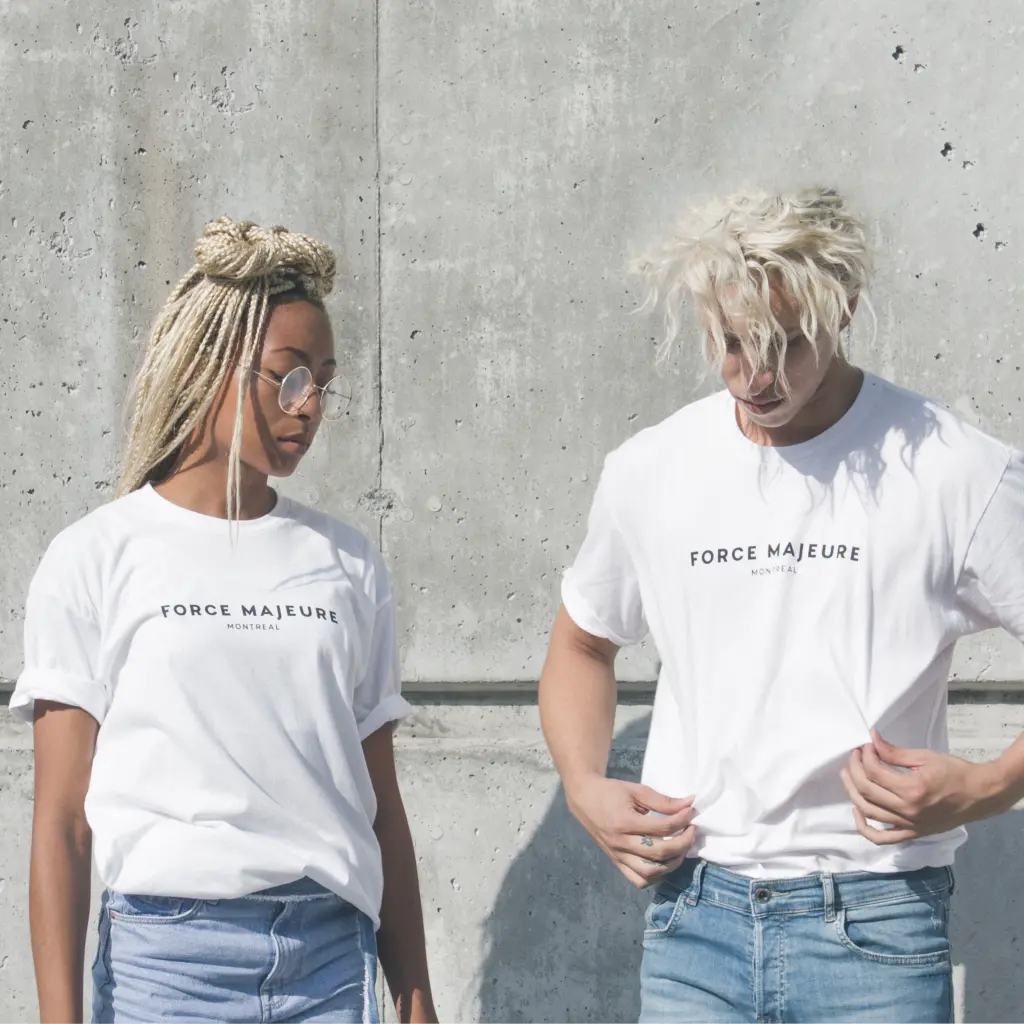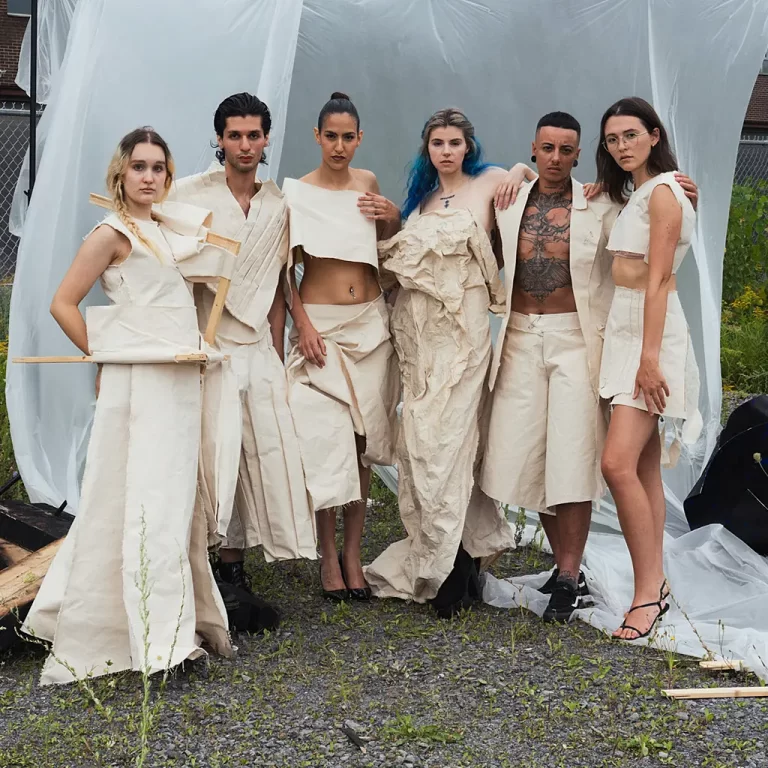The search for the ultimate T-shirt is as elusive as finding a couture gown at a flea market. Difficult, but not impossible. Ironically, the simpler the garment, the most important the tiniest details become.
To produce the absolutely best-fitting T-shirt requires some sort of golden ratio. It has to be cotton. But spun Egyptian is the best (among others — we’ll get back to this). Then comes the stitching. The overstitching. And the critical question of the sleeve length and fit. Should it be loose, closer to the elbow, or almost a cap sleeve, which some find definitely sexier? What about the bustline? It has to be close to the body, but maybe not that tight.
Because of all these important considerations about a garment that is known as a ‘basic’ — but never truly is when you want style above all—,Fashion Beauty Runway is taking a deep dive into the T-shirt, this week.
Humble Beginnings
Nearly 2 billion T-shirts are sold each year worldwide, which makes that almost the most popular garment on the planet. On average, that’s 2.66 units per person in North America. Not bad for something originally worn as an undergarment by labourers, soldiers, and sports enthusiasts in the late 19th century. Initially, the T-shirt was a one-piece suit with short sleeves, serving as an efficient and comfortable alternative to the traditional long-sleeved undergarments of the era. It gained prominence for its practicality and ease of movement, particularly in hot and humid climates.
It wasn’t until the early 20th century that the T-shirt started to emerge as a standalone piece of clothing. In 1913, the U.S. Navy adopted the T-shirt as part of their standard issue uniform, introducing the term “T-shirt” due to its shape resembling the letter “T.” This military endorsement gave the garment a boost in popularity among men, especially after World War II when veterans continued to wear them as casual attire.

Rock on!
The T-shirt’s association with rebellion and counterculture movements emerged in the mid-20th century, particularly during the 1950s and 1960s.
A major shift in how the T-shirt was perceived took place in cinema, with Marlon Brando’s performance as the brutish Stanley Kowalski in 1951’s “A Streetcar Named Desire”. The tight fit and rolled-up sleeves made for a tantalizing show of Brando’s beefy torso and muscular biceps, ushering in a new era of the male star as sex object. It no doubt played on stereotype and, along with James Dean in “Rebel Without A Cause,” planted the seed for the T-shirt as the cultural renegade’s garment of choice.
Another change of pace came about in the 1960s with the emergence of tie-dye T-shirts, a symbol of rebellion against the conservatism of the previous generations using hands-on techniques that corresponded to the emerging trends of new age philosophy. Plus, the patterns formed by tie-dye also echoed the effects of psychedelic drugs.
The graphic T-shirt, featuring logos, slogans, and political messages, became a powerful medium for self-expression during the seventies, reflecting the many social and cultural changes. Punks slashed their T-shirts, fastening the rips with safety pins and badges. That and the popularity of rock concerts further fuelled the T-shirt’s popularity, with tour merch playing a growing part. The T-shirt was no longer just a humble garment; it became tied to one’s personal identity and a silent rallying cry for musical tastes and political beliefs.
Rise of the Designer T-shirt
In the 1990s, the T-shirt continued to evolve under the watchful eye of fashion designers experimenting with different cuts, fabrics, and styles to cater to diverse tastes. Alongside the designer appeal of T-shirts, super tight, cropped, baby Ts started making their way into raves.
James Perse was one of the first brands catering to the nascent premium T-shirt market with a line seamlessly blending luxe and casual, and instilled with the classic laid-back L.A. vibe. Over time, those T-shirts have become classic staples of good taste with a substantial price tag. The Luxe Lotus jersey Tee for men, made from a Japanese spun cotton, which gives it a clean and satin-smooth texture, currently retails for CA $265.
In the late 1990s, Helmut Lang and Ann Demeulemeester were the European designers that ruled the runways, and the ‘chic du jour’ was wearing a slouchy black pantsuit paired with a pure white T-shirt.
The early years of the millennium saw the Olsen twins terminate their career as child actors and move on to fashion by creating The Row — named after the fabled Savile Row street in London, the global destination for handmade suits — and currently one of the most praised American luxury labels.
The idea for the brand started as a personal project in 2005 when Ashley Olsen challenged herself to create a perfect T-shirt. She tested the prototypes on a variety of women of all body shapes and ages in an attempt to find a “commonality in fit and attitude.” The brand has expanded to include ready-to-wear, resort, handbags, sunglasses, and shoes. The Row T-shirts continue to be a basic of the brand, hovering in price between US$480 and US$800. Maybe not for the gym… Unless you’re the 10 percent.

What About High-End T-shirts?
A world in their own, high-end T-shirts are characterized by exceptional quality, craftsmanship, and attention to detail, setting them apart from mass-produced, cheap counterparts, which have flooded the market in the last five to six decades. Unfortunately, what consumers are now accustomed to.
Fabrics? Here’s another important element. No premium T-shirt should ever contain polyester (anathema!). And nothing beats the comfort factor of a one hundred percent cotton T-shirt. But there’s also Pima cotton, Egyptian cotton, or Supima cotton to consider. These fibres are known for their softness, durability, and breathability, providing an unmatched level of comfort. Some high-end T-shirts also occasionally incorporate luxe materials like silk or cashmere for a more luxurious feel.
If you’ve been streaming ‘The Bear,’ you might have noticed Jeremy Allen White’s character as a young, award-winning chef wearing the most impeccable plain white T-shirts in many of the scenes. It’s said the costume department outfitted White with two brands: Menz B Schwann, which is German, and Whitesville, a brand previously made in America by legendary defunct retailer Montgomery Ward, but now licensed and made in Japan, right down to the original retro art on the packaging and the tags. No deadstock here!
What makes these T-shirts so special are the loop wheel machines (which are all vintage) used to knit a tube of fabric so the T-shirts wind up with no seams on the sides. Only one size at a time can be produced which makes this a slow, cumbersome process with limited manufacturing capacity. These knitting machines have gradually been phased out over the last few decades, which makes them even more rare.
By comparison, modern T-shirt machines rapidly spit out fabric that manufacturers just cut into, making for somewhat uneven seams that pull. We’ve all been subjected to this styling abomination, at some point.
A premium T-shirt is also about the details. For example, binded necks takes longer to stitch but hold up better, over time. Then there is the extra stitch on the shoulder seam, which makes for a more robust and durable garment, but also takes longer to produce.
However, attention to detail and considered design also bring more joy and something you’ll wear more often. With that mindset, cost per wear becomes more important than the actual price. In the world of fast fashion’s hegemony, it’s nice to know that something as simple as a plain white T-shirt can make that big of a difference.

Some T-shirts We Love
Gildan Soft Spun Junior T-shirt: The most affordable and stylish T-shirt on the market! Sits well below the hips, cleverly concealing any offensive muffin top, but tight enough to enhance all your curves. You can get it in bulk at less than CA$5 each.
Skims: Fitted crew with 10 percent spandex, with a longer front so that the T-shirt doesn’t roll up. Buttery soft and super stretchy and great for a seamless look. Available in an assortment of beautiful, fashion shades.
Petit Bateau: the quintessential T-shirt for generations of French girls, this brand is known for its natural comfort and elasticity thanks to an iconic slim-fit style and its softly rounded neckline, while the armholes are narrow and the perfect sleeve length.





